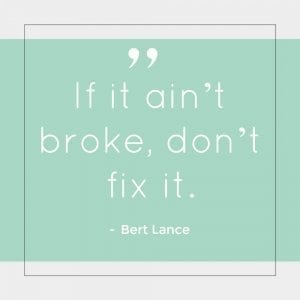“If it ain’t broke, don’t fix it.” – Bert Lance
An apt quote that applies to just about every facet in life, from home remodels to governmental policies. Don’t get us wrong. In many cases where the web is involved; improvements and thinking outside the box are great assets. However, when it comes to web conventions, well, they’re conventions for a reason.
From one website to another there are a few consistencies you may notice. For example, where the company logo is placed, the location of the navigation, how links within the page are styled, what the buttons on the page do, the standardization of icons, visual hierarchy, and naming things clearly and precisely. All of these come together to give the user a familiar and reliable experience across pages. It’s when we stray too far from these conventions that the frustrations begin.


Web conventions are your friends and even though it may not require you to think outside of the box it means your audience doesn’t have to either and that is a wonderful thing. You want you’re website to feel familiar and be easy to use. Don’t give your audience a dancing frog, give them a great design that they can understand and a link that sends them to the right place.

